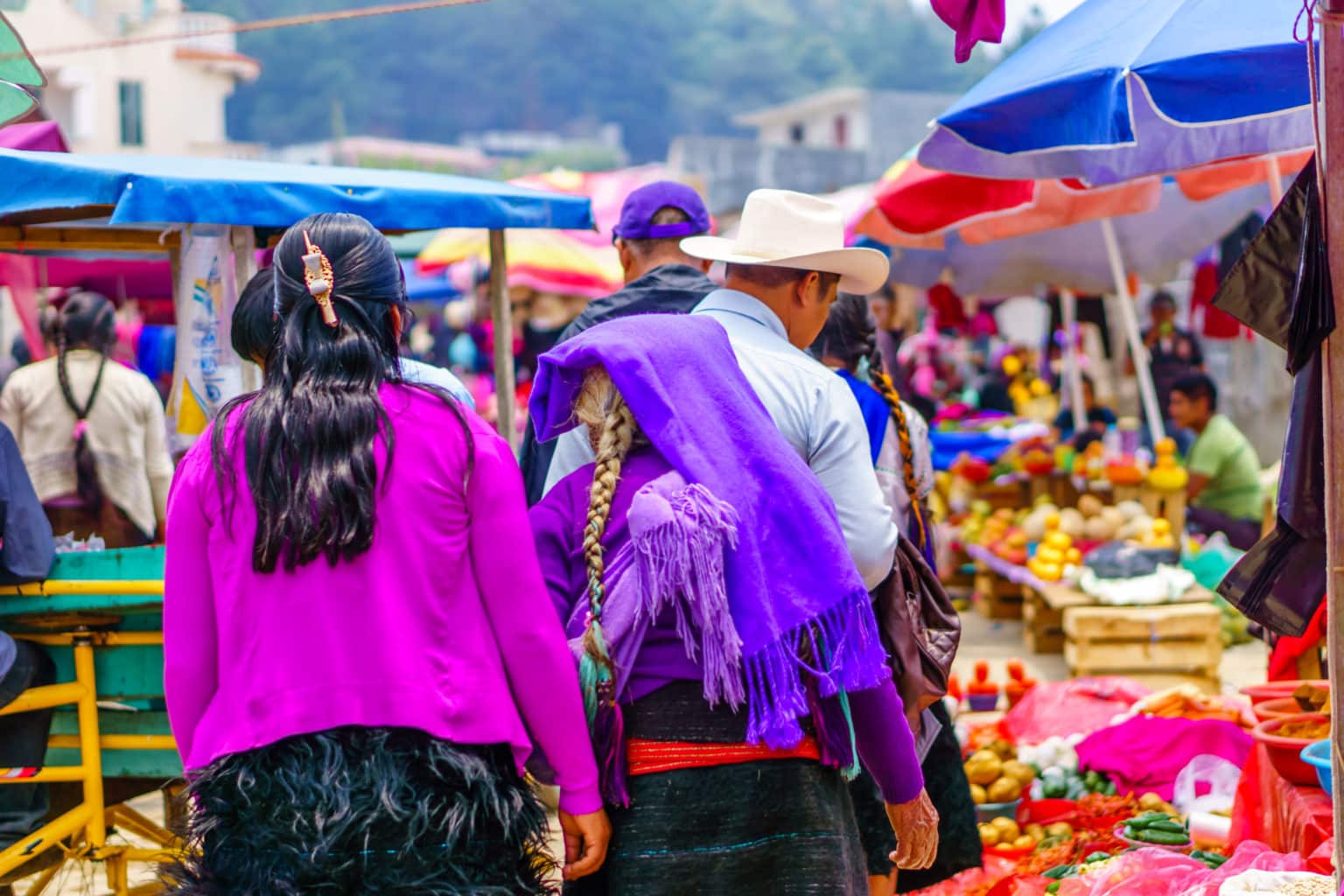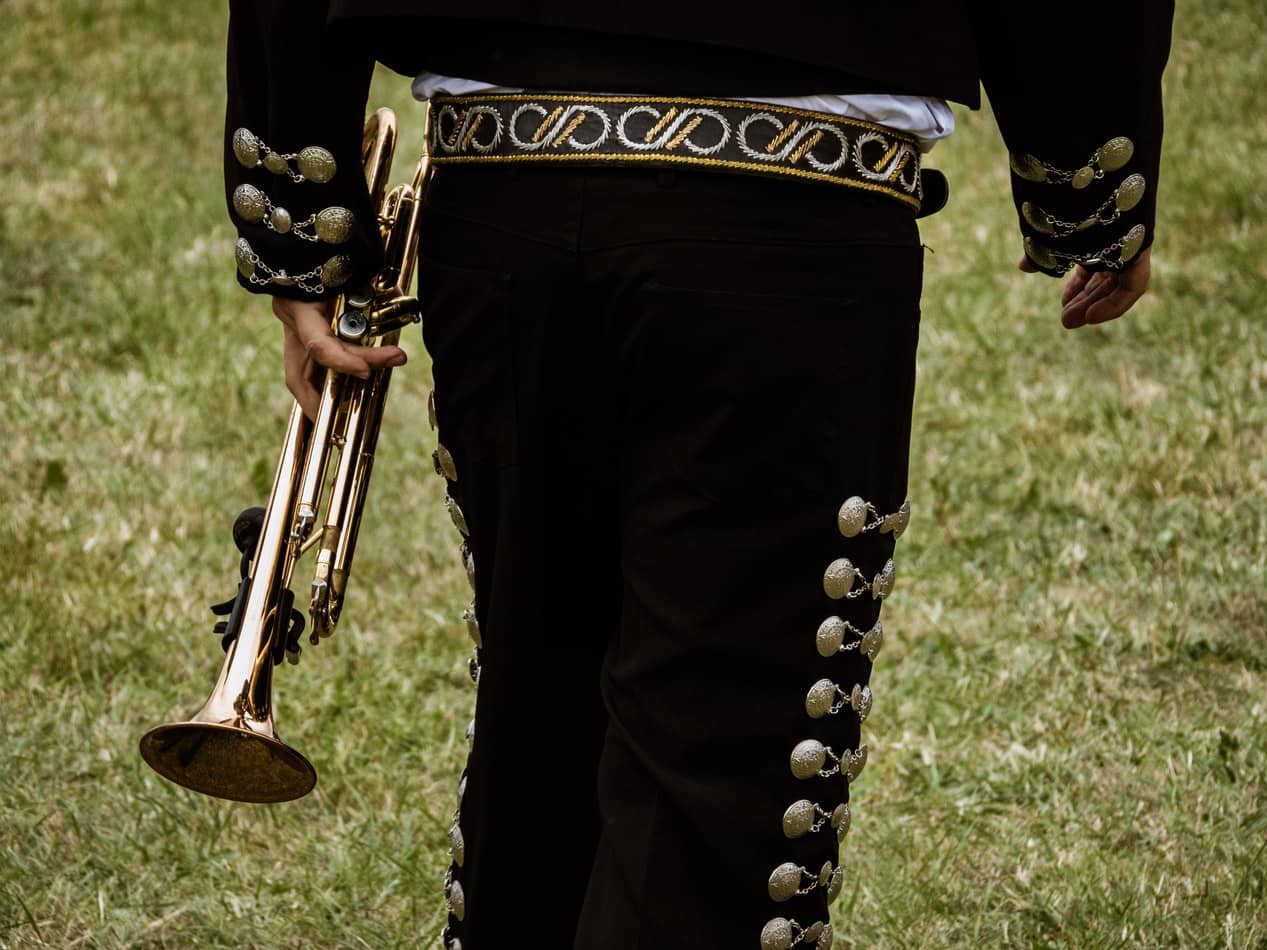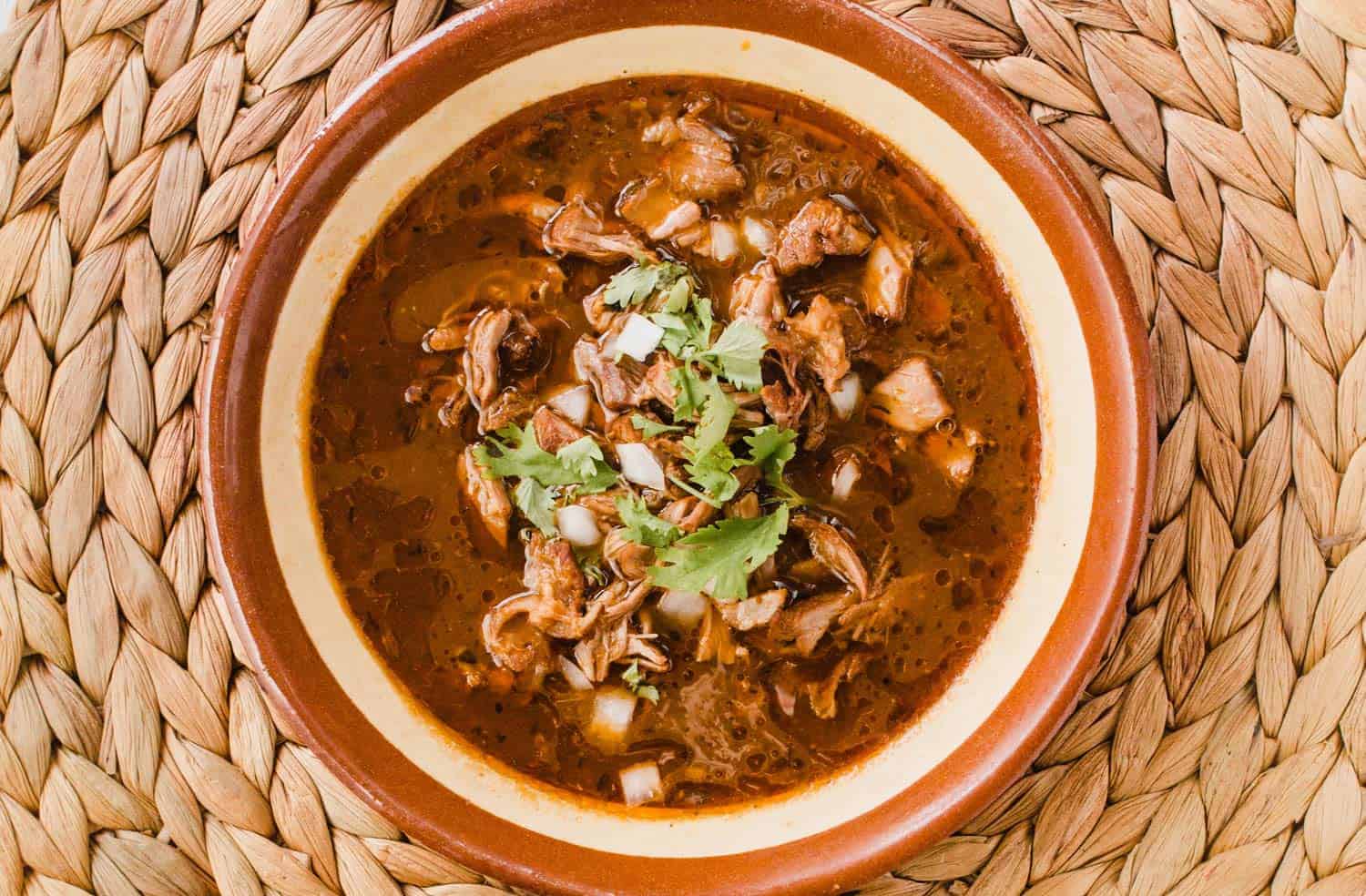
Immersion in the Mayan villages of Chiapas
In what parts of Chiapas could you live among the Mayans? This immersion in a Mayan village in Chiapas tells you absolutely everything!
En visitant notre site, vous acceptez notre politique de confidentialité concernant les cookies, les statistiques de suivi, etc.
The Mexican music has a reputation that extended well beyond its borders and mariachi (the band of musicians playing this music) have become folk ambassadors who carry their art and culture worldwide. Mariachis, like corn tortillas or the pyramids of Teotihuacan, are the soul of Mexican culture and therefore permeate history, rituals and customs. Mexican music, resulting from interbreeding, is very varied and offers different styles depending on the geographic region from which it comes. But wherever it comes from, mariachis have become an integral part of Mexico’s identity and sense of national pride, even in Chiapas.
Discover mariachis, one of Mexico’s most famous musical traditions and one of the country’s most popular musical genres.

Historians agree that at the same time as the sword of conquest and the cross of the gospel, Spanish music arrived on the new continent to be quickly integrated and transformed locally until it obtained variety and the special character that distinguish it today.
When Fray Juan de Padilla taught the natives of the Cocula (Jalisco) region Christian doctrine using Spanish music, the latter very quickly incorporated the violin and guitar into their own musical groups and demonstrated talent not only for reproducing and transforming music but also to copy the instruments and give birth to new similar stringed instruments for local use, such as the vihuela or the guitarrón. The result of this cultural symbiosis is a wide variety of Métis rhythms and melodies. performed by musical groups of different types.
The mariachis are an example and their success in the artistic framework is not unrelated to the lobbying exerted by the new Mexican state born of the revolution. It is indeed a way to concretize in the musical field the ideals of the nation in archetypes which would represent the new revolutionary project.
The music that reigned in Mexico a few centuries ago consisted of flutes, drums (made of wood, dry mud and snails). It was an essential element in all sacred rites . The arrival of Christianity and the Spaniards in many regions brought new instruments: violins, guitars, harps, and other wind instruments. Local musicians have not only learned to play with them but also to make them, sometimes designing them from their imagination and perception.
Music and dance were important elements in Spanish theatrical productions, popular around the world during colonial times . There were therefore orchestras that accompanied the theater composed of violins, harps and guitars. From these groups come many genre of music in Mexico, among others, the mariachis .
The instruments used in a mariachi band are very varied. Basically, they are strings (guitar, violin and guitarrón) and trumpets, but there are formations that also make use of musical instruments of indigenous origin, such as the huehuetl and the teponaztli or even sometimes others. instruments like the flute, harp or accordion, depending on the region.
The garment of the mariachi is a mixture that combines the clothes of the foremen of the haciendas with those of the elegant landowners who were, among other things, wonderful horsemen, known in Mexico as chariots. To crown this ensemble, we have the inevitable straw hat that covers this character, a sort of cowherd or cowboy in the Mexican imagination.
By the middle of the 20th century, the mariachi became a true symbol of Mexico and its music spread to all Mexican society, from the richest to the poorest. Mariachi is an integral part of the culture and there are no parties, festivities or celebrations without it. There is no marriage without mariachis and without mariachis there are neither baptisms nor burials.
It was long believed that the word mariachi was a local interpretation of the French word “marriage” and that it referred to musicians who performed at local weddings during the French occupation in western Mexico. This version, however, was definitively discarded in 1981, when in the archives of a church a letter dated 1848 (more than ten years before the French occupation) was found in which a local priest was already complaining. the noise the mariachis made. The most commonly accepted version is that the term mariachi comes from the Cocula region , known as the world birthplace of mariachi, where the Coca Indians so called a musician in the 16th century.
Many musicologists have asked themselves the question. According to interpretations, it is a derivative of the word “marriage” inherited from the French era when Maximilian was Emperor of Mexico. According to this legend, the mariachi was named by the French, during wedding celebrations. But this legend was completely denied, with the discovery of the use of this word in a document which dated from before the arrival of the French in Mexico.
Now, most scholars believe the word “mariachi” originates from native roots . It derives from the name of the wood with which we made the boards on which we danced to accompany the rhythm of the local music. As a mexicophile, we will settle for a much simpler explanation. “Mariachi” expresses an art of living , one of the most interesting and festive musical concepts in the world.
The Mexican films of the forties and fifties have been instrumental in spreading the image of the mariachi. Movie actors who wanted a successful career inevitably had to be singers of ranchera (Mexican popular music) and sing accompanied by a group of mariachis. Actors like Pedro Infante or Jorge Negrete have made a career thanks to their gifts of singers and riders. Chilean writer Hernán Rivera Letelier explains in an interview that the expansion of Mexican music in Latin America was due to the fact that Mexico was the first country to develop a film industry on the continent.
In his novel “La Reina Isabel cantaba rancheras” (translated into French as: “Queen Isabel sang songs of love”), Letelier depicts the sordid world of saltpetre exploitation in northern Chile, through the intermediary of the character of Queen Isabel, a prostitute who had multiple gifts but, above all, a pronounced taste for music ranchera.
The love for Mexican music is not an isolated phenomenon and there is an incredible craze for this music in countries like Colombia, Peru or Venezuela. In these countries and many others in Latin America, it is customary to pay for the services of a group of mariachis to “give the serenata” to brides or to set the mood in ceremonies of all kinds.
The Place Garibaldi , located in the historic center of Mexico City, is the most important forum mariachis in the Mexican capital. In this plaza one can listen to and engage bands playing songs to order for a very reasonable amount of money and many people come to this place to have a few glasses of tequila and hear their favorite song, the one that connects them to their story or the love of their life.
Many legends of Mexican popular music have passed through Garibaldi Square before being known on the international scene. Among them, José Alfredo Jiménez and Chavela Vargas are two giants out of Garibaldi.
The former is recognized almost unanimously as the best composer of Mexican popular music and as the founder of a style characterized by passion and emotionality. The lyrics of his songs are always about love or breaking up. They also talk about alcohol because, in a macho culture, a man’s tears can only be explained by drunkenness. With the help of alcohol, the song turns into a confession and fate is better accepted. José Alfredo Jimenez died at the age of 48 and left hundreds of songs: many are true jewels of popular music such as “No volveré”, “Paloma Negra”, “Ella” and “Si nos dejan”.
The second, Chavela Vargas, was a close friend of Jimenez. She knew not only fame but also hard years of alcohol addiction, which she ended up conquering almost by miracle to return once again on the big stages. His particular style has made his success: a strong voice that can turn into a whisper or a lament, making his songs even more heartbreaking.
Chavela Vargas, who died in July 2012, was a character against the tide: she dressed like a man, smoked tobacco, drank excessively and carried pistols. She got to know Ava Gardner, Rock Hudson and developed a very close friendship with Diego Rivera, Frida Kahlo, Picasso, Neruda and Gabriel García Márquez, among others. Her life was intense until the end and those who knew her all remember her the same way: a strong personality, tenacious, lively and dynamic, able to celebrate her ninetieth birthday by making a jump parachute, with a touch of madness.
It is important to remember that mariachi music is played, sung, but also… danced! A form of dance which is traditionally associated with the “son jaliciense” and the “son jarocho”, the “zapateado”, a style with Spanish origins. When doing “zapateado”, the dancer hits the heels of their boots with the floor, marking rapid rhythms and a few syncopations which complete the dynamism of the instruments. The zapateado can even make splinters of wood from the floor so it is danced with intensity and force. Each regional variation of this genre of music has its own style of dance. The huapango or huasteco, to which can be added the jealous sound and the jarocho sound, is danced on the floor. In some places (especially in Jalisco) the dancers sit on dry mud jugs. To dance the huapango, the couples line up in parallel lines. The torso is held upright as the feet glide subtly, performing quick and complex steps. Nowadays, dancers sometimes put a glass of water on their heads to demonstrate their agility and absolute control.
Although today they dress in different ways, the traditional costume for mariachi remains the charro, more specifically that of the Jalisco region. It was after the revolution that mariachis began to wear the charro costume.
At any social event or celebration in Mexico, there is always time to sing and dance to the best Mexican songs with a good mariachi, as their music is perfect for a birthday, wedding, graduation, or even a Mother’s Day serenade.
If you are looking to rent cheap mariachis, be aware that prices can vary greatly depending on the group of mariachis you want to rent, or the number of songs you want to play, since many of them are charged by the melody, or the length of time you listen to them, which can be half an hour or an hour; you should also consider factors such as the type of party (wedding, birthday, graduation), or whether you want to rent them for a serenade for your partner or mother.
Prices will depend on a number of factors, but generally the cheapest mariachis charge between $1500 and $2000 pesos (between 50 and 75€) per hour. A very reasonable cost for their services.
Tecalitlan’s Mariachi Vargas is the best Mariachi in the world, as he became the first Mexican artist in history to perform in a major concert at the United Nations Palace, making the “Roots of Mexico” event one of the official cultural activities of the United Nations for July 18. 2018
The mariachis play different styles. “Mariachi”, is not a musical genre, because Mariachi bands play music of various styles: Jalisco sounds, ranchera songs, corridos, huapangos, boleros and sometimes jarochos and Mexican waltzes.
Mariachi Vargas de Tecatitlán.
Mariachi Mexico de Pepe Villa.
Mariachi Internacional Guadalajara.
Mariachi Nuevo Tecalitlán.
Mariachi Cobre.
Mariachi Los Camperos.
Mariachi Tepaltepec.
Do you have any questions about mariachis? Are you planning a trip to Mexico and want to know all about this special music from Mexico? Write us
AUTRES ARTICLES

In what parts of Chiapas could you live among the Mayans? This immersion in a Mayan village in Chiapas tells you absolutely everything!

Discover the Selva Lacandona, located in the southeast of Chiapas. It is a unique place for its natural beauty, its Mayan culture and its exuberant wildlife.

Birria is a traditional Mexican dish that was born in the state of Jalisco. Let’s see how much the beef birria has evolved since its creation.

Given the situation and the impact of the Coronavirus in the world and in Mexico, since the coronavirus arrived in Chiapas this week, the Chiapas

Wondering if you should rent a car in Mexico? This article, full of tips on renting in Mexico, is for you! ????

The waterfalls of Chiapas are known all over the world for their beauty and the crystalline waters of multiple colors that turn out to be a colorful spectacle.
Alma De Chiapas
22 blv Maréchal Leclerc, 38000, Grenoble, France
blablabla@alma-de-chiapas.com
@Copyright 2020 Alma de Chiapas
Legal Notice
Privacy policy
Design & Creation by Upleeft